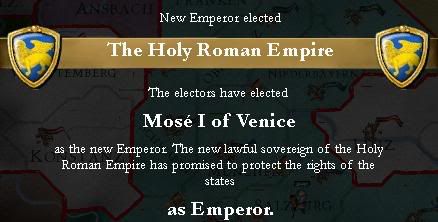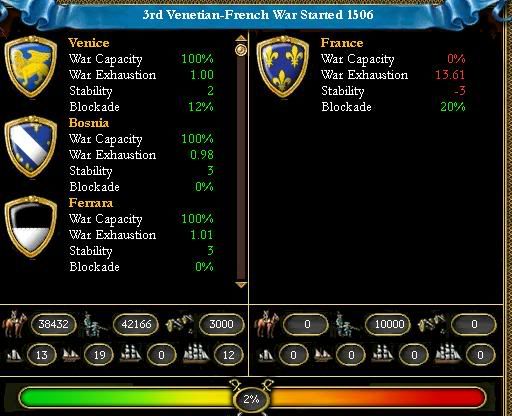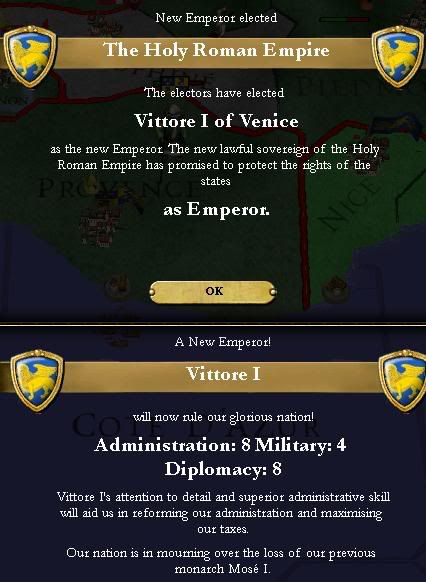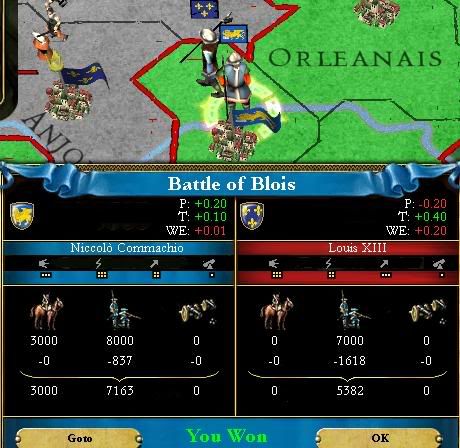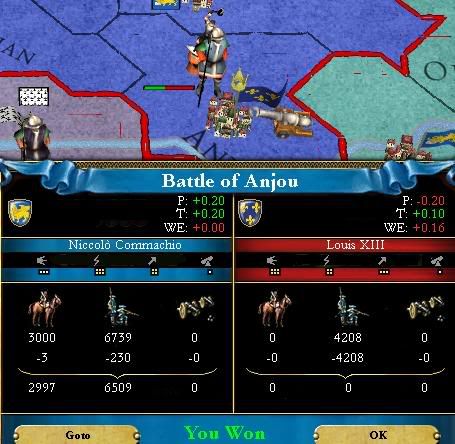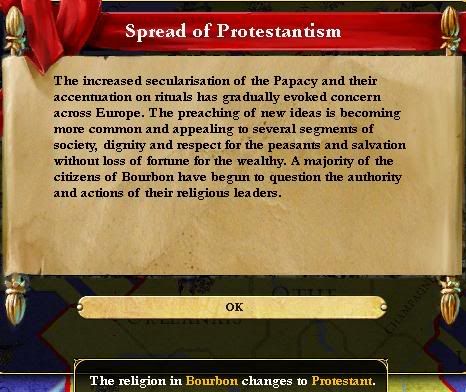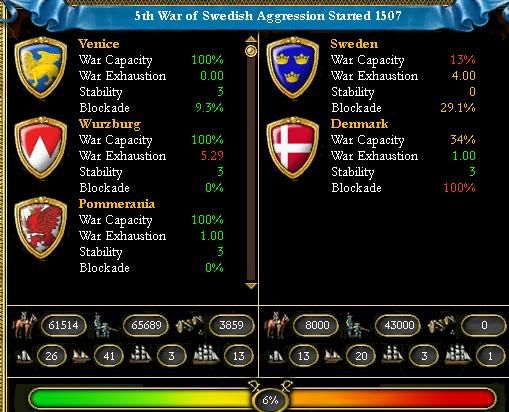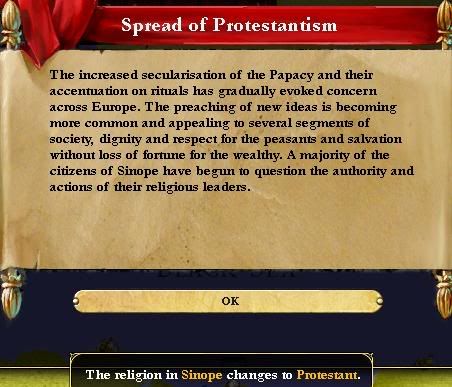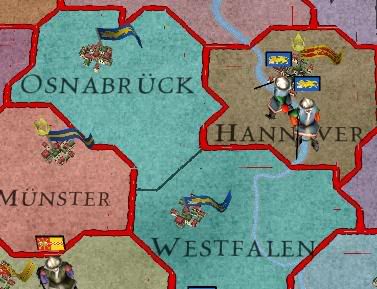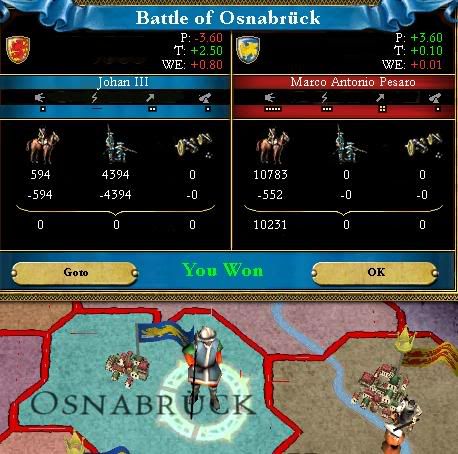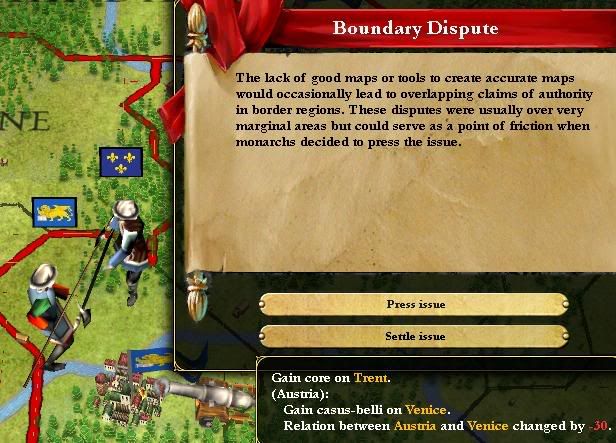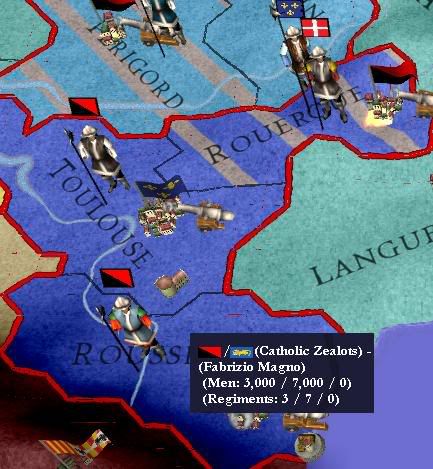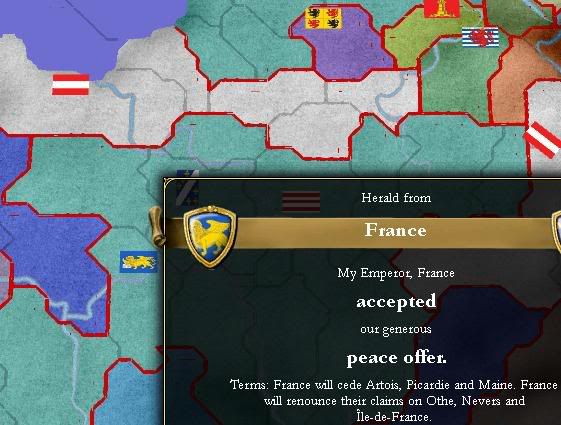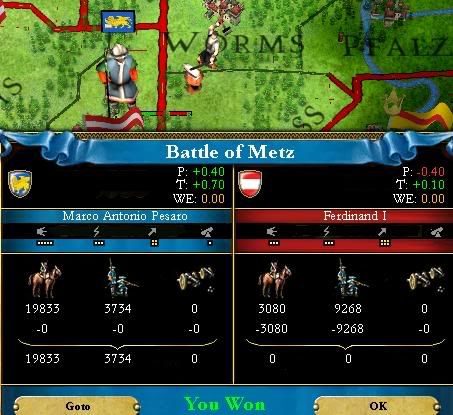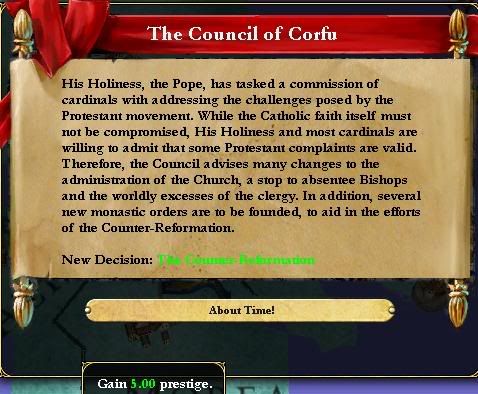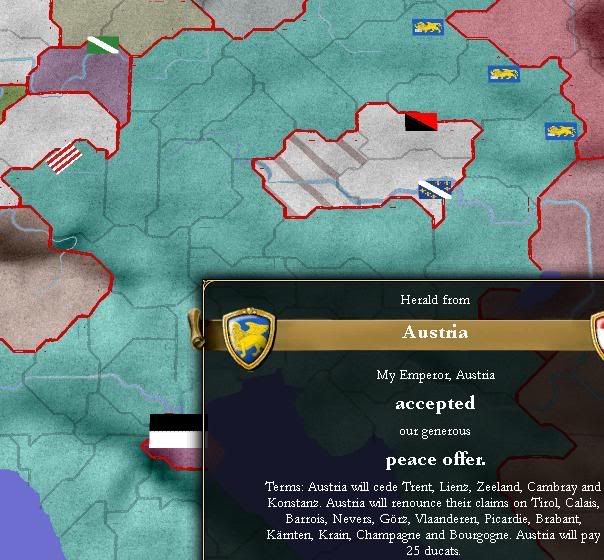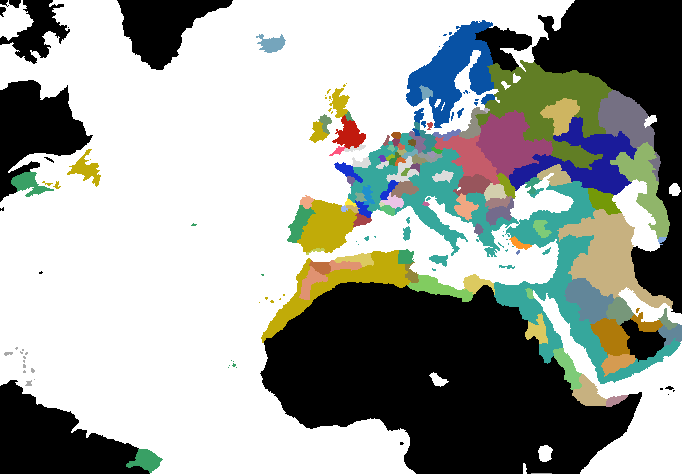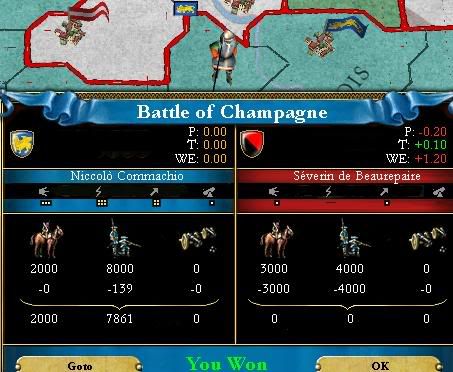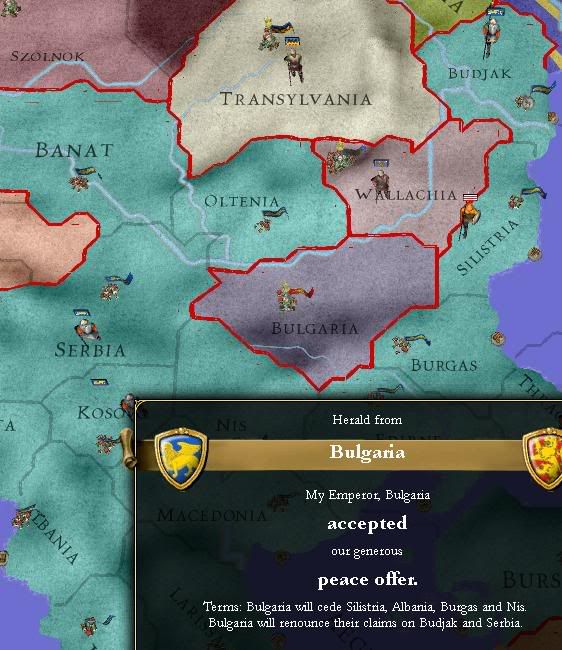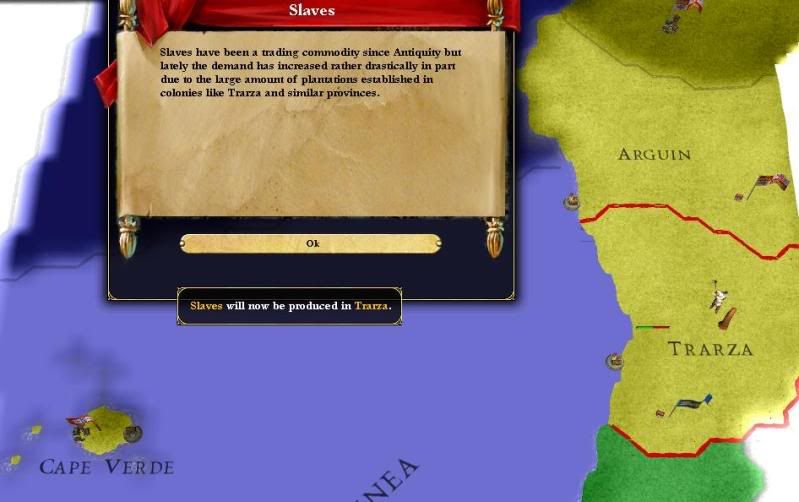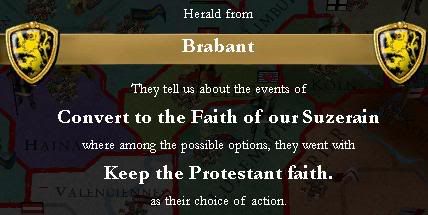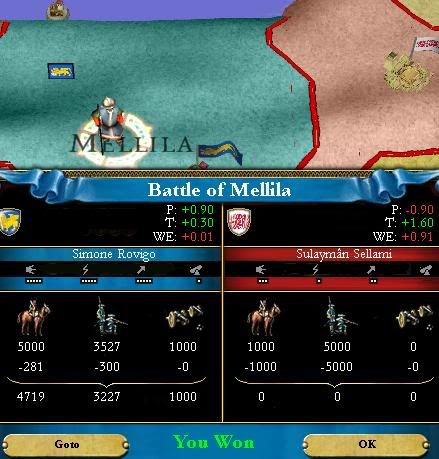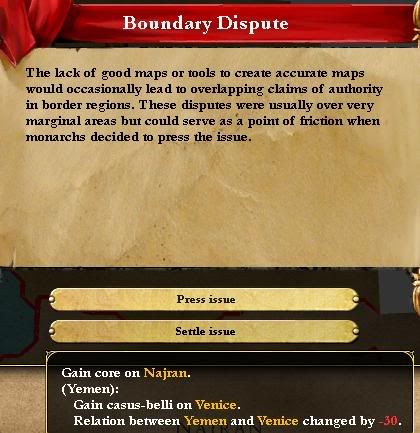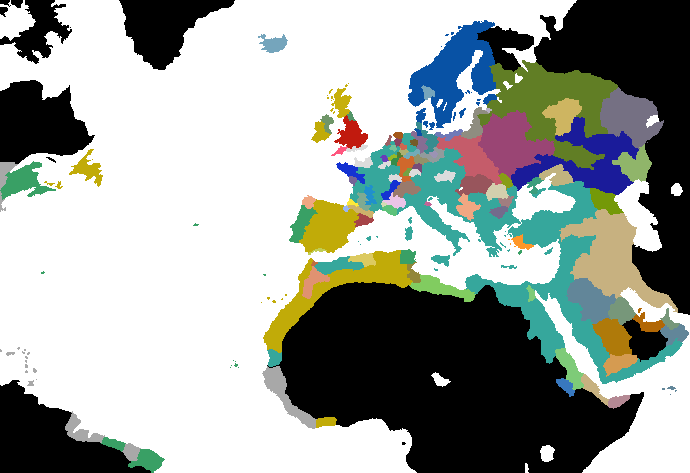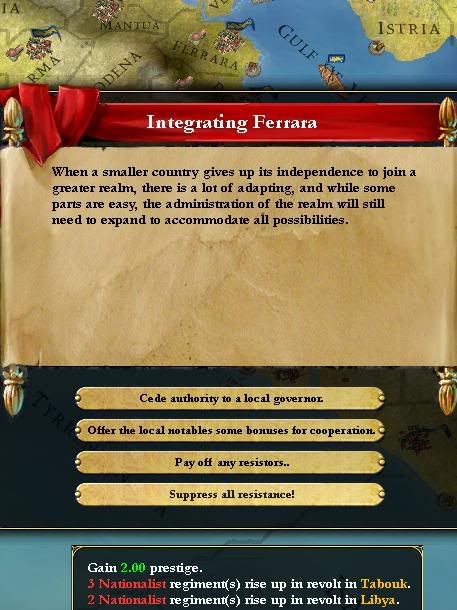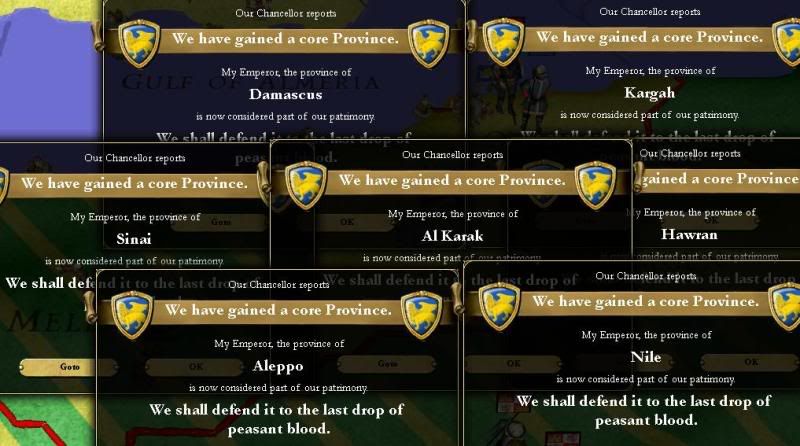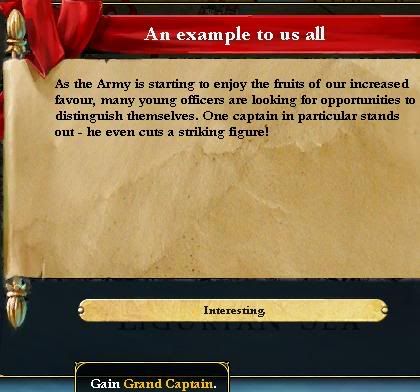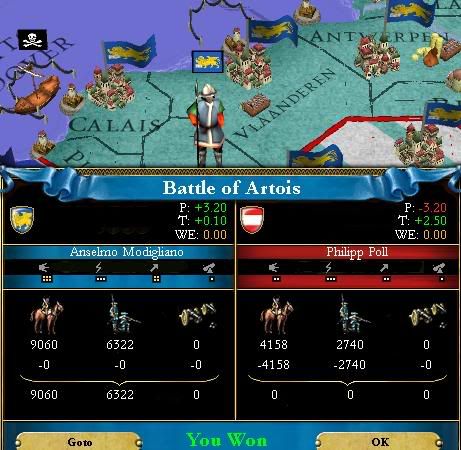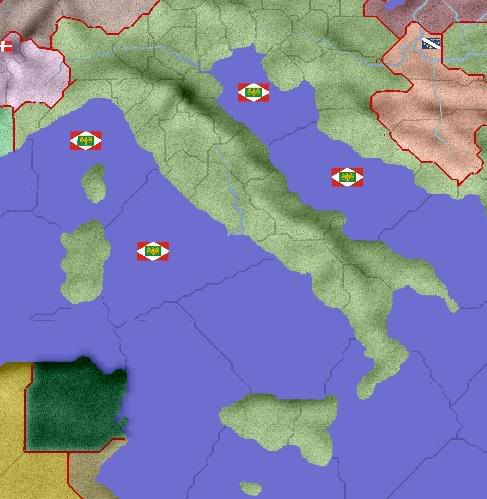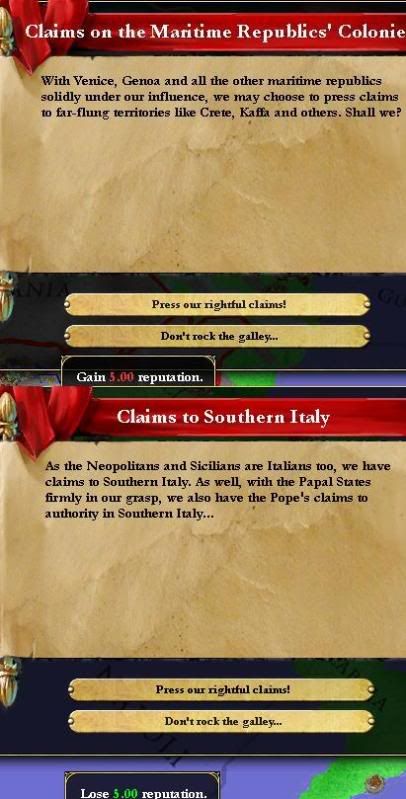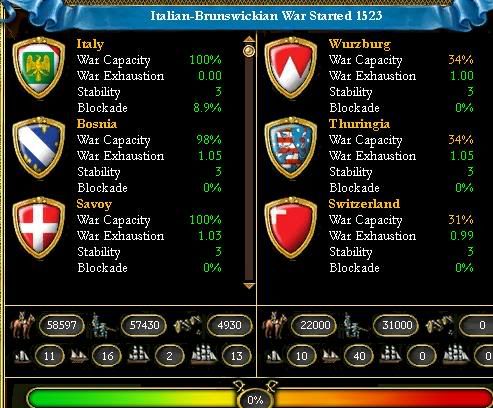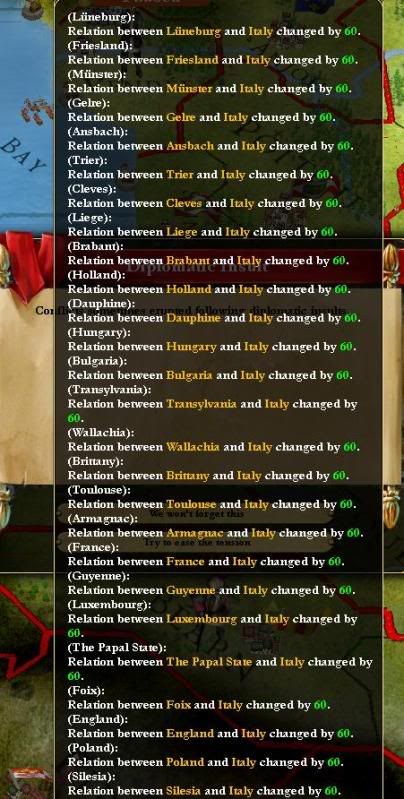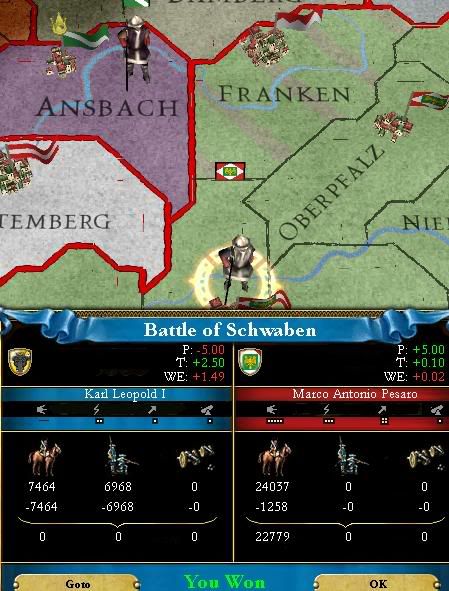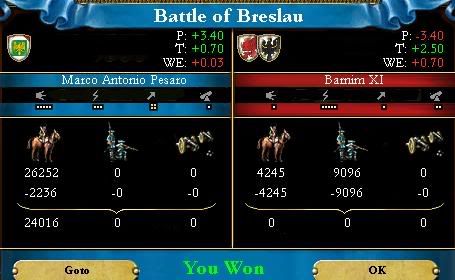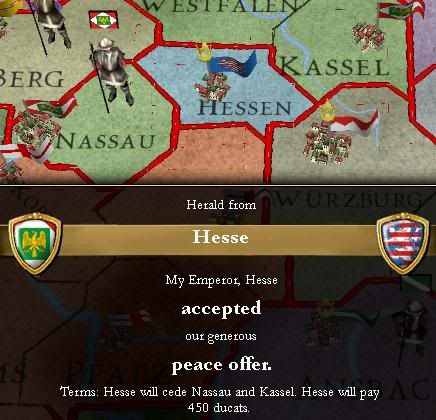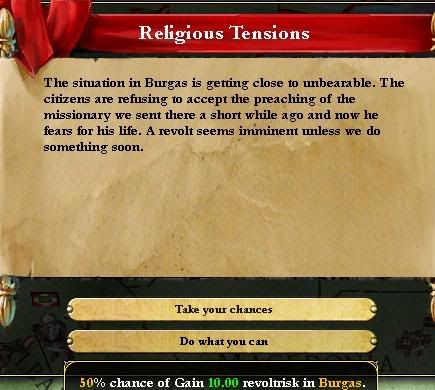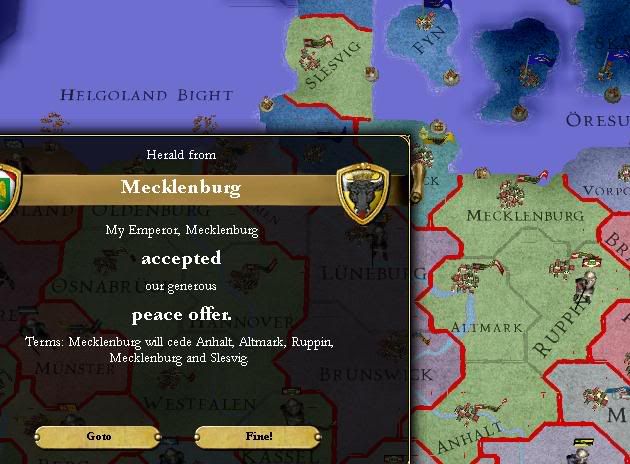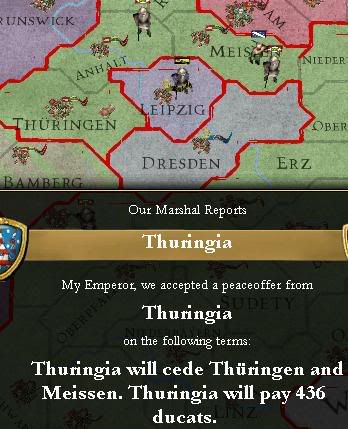Tani Coyote
Son of Huehuecoyotl
- Joined
- May 28, 2007
- Messages
- 15,195
Chapter XXV: Habsburg Hamburger(1501-1504)
Spoiler :
March of 1501, news arrived that the French had moved their court and capital to Anjou. People began to refer to the Bourbons as the Neo-Angevins. This would at the very least make Paris a much juicier target.
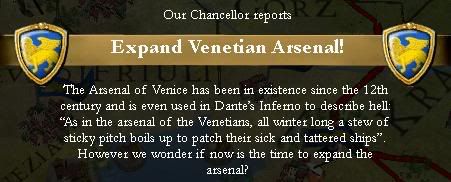
April, despite the fact Venice was more focused on acquiring bigger ships to fight the Iberian fleets, the Emperor expanded the Venetian arsenal so galleys could be amassed for pirate fighting duties. A whopping 10 galleys were commissioned throughout the Empire to protect the sea lanes. As well, a single one of the new Caravels was commissioned in Venice itself.
Venice made plans to warn the Austrians against further aggression, however, the fact they were under a regency council would inhibit any imperialist ambitions on their part. So it was logical to instead find a way to gain a casus belli on them.
May, it was discovered that Poland no longer ruled in personal union over Lithuania.
February, the Timurid Empire was finally destroyed by the Shaybanids.
April, Sunni zealots rose up in Hadramut, but were struck down quickly and without mercy.
Mid-April, Orleanise nationalists rose up in Blois. General Pesaro was ordered to deal with them.
Late April, as the Battle of Blois raged, the treacherous Bulgarians pressed claims to Serbia, talking about "Pan-Slavism" and such nonsense.
May, Suakin was converted to Catholicism.
The rebels were soon crushed in the Battle of Blois, and they fled to Anjou. Pesaro was ordered to keep his guard up in the event they returned to Venetian territory.
July, a band of Lollard Heretics - that had occupied Paris and had come from it - invaded Venetian territory, but were repelled.

August, Salzburg's three provinces joined the Venetian Empire. Rebels rose up in Karnten and Slavonia in response when the Emperor offered no concessions for the peaceful annexation.
Immediately, 6,000 cavalry, 3,000 infantry, and 1,000 cannoners all converged on Karnten. The new cannons would finally be tested under the leadership of Pesaro.
September, the Styrian nationalists of Karnten were humbled, and as they fled to Lienz, Pesaro moved on Slavonia.
October, the 2,000 men in Slavonia were easily torn apart by Pesaro's cannons. The general was ordered to make sure the Styrian nationalists didn't become too troublesome.
December, the Hussite "War" finally de jure ended, as the destruction of Romanist Silesia by Poland allowed the Hussites in Prague to claim victory.
As well, the Lollards from Paris were once more repelled back to their fortress.
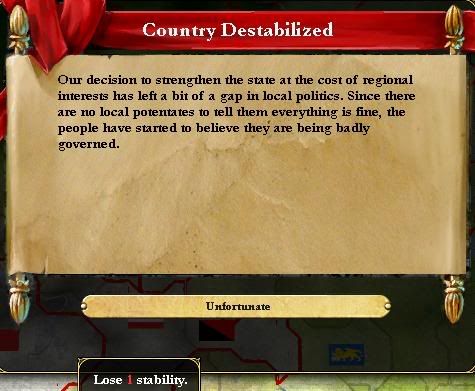
At the annual New Years' celebration in Venice, the Emperor announced new reforms that would put more power in his hands for the benefit of the realm. This of course, had predictable results.
Hungry for war, the Emperor excommunicated the ruler of Trier, a vassal of Austria.
Claims were soon fabricated to the throne of Trier, and the war would be that much easier with Austria having no ruler and instead being run by a regency council.
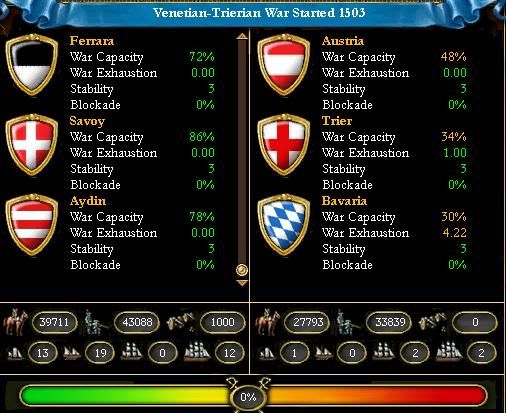
The declaration of war in early March had the Austrians and Bavarians join in against Venice, while Novgorod ran away. No matter, as the Novgorodians had served their purpose as a defense against Poland-Lithuania, which no longer existed.
By late April, most battles had been minor skirmishes, while the Battle of Pressburg against the Austrians had minimal casualties on both sides. General Commachio was placed in charge of invading the Austrian homeland, Mose I took up command for taking the center of the Austrian Emperor, and Pesaro and Modegliano were to take over Austrian France and the Austrian Lowlands.

May, Niccolo Commachio's command at the Battle of Ostmarch made for a great victory over the lumbering Austrian soldiers.
Late May, 17 regiments were defeated in Othe, prompting them to retreat to Lollard-occupied Paris(which the Austrians were trying to liberate) and which already had 32 Austrian regiments inside. It was hoped that attrition would roast them alive.
June, the Battle of Linz destroyed the Austrian army protecting the homeland. It was deduced the units in Paris - who were being massacred by the difficulties of feeding all their men, not to mention Mose I's sneaky incitement of a troop desertion - were the main foe. Once Austria was occupied, troops would move on Bavaria.
July, Trier was fully occupied, but they could not be taken out of the war by merit of being a vassal. All infantry in the area were ordered to attack Austria's Rhenish provinces, while all cavalry were ordered west to support the efforts against the Austrian horde.
September, Commachio occupied Ostmarch. While Venice's allies attacked Vienna itself, it was reasoned that it was time to use the Bavarians as cannon fodder.
October, Flanders was taken from Austria while the Habsburg Horde converged on Barrois.
November, General Pesaro and Modegliani led 36 regiments against the Austrian hordes in Barrois.
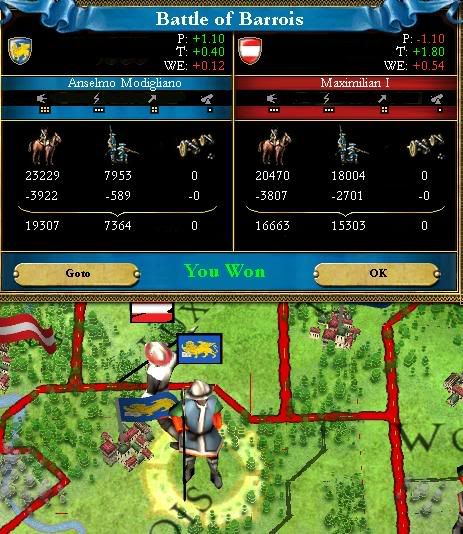
The Battle ended later in November, being costly to both sides.
December had another victory over Austria in Valenciennes, with Venice suffering slightly more cavalry lost but Austria suffering far more on the infantry front.

December also had the Battle of the Sudetenland, where 5,000 Bavarians were easily cut down by the new Venetian cannons.
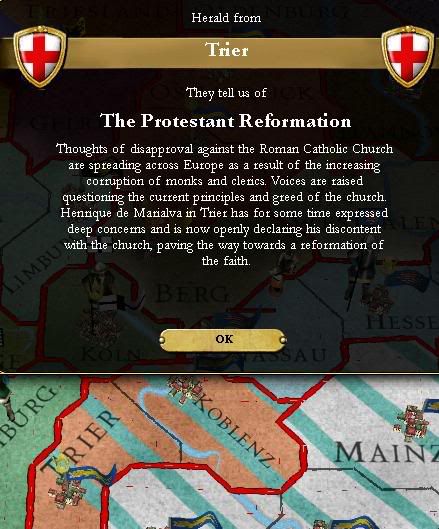
February, a heretic arose in Trier, and the people quickly followed his ideas of a reformed Christian faith.
March, Zeeland fell, placing the whole of the Austrian Lowlands under Venetian control.
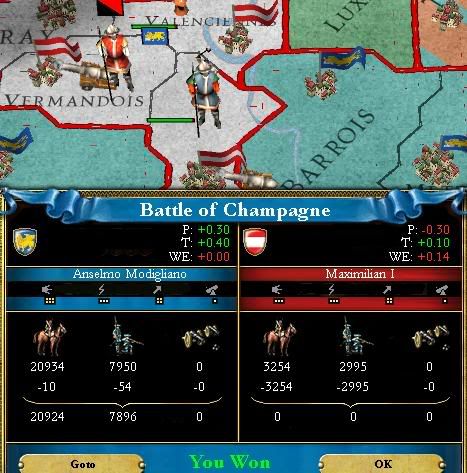
Late March, the Battle of Champagne destroyed the last of the Austrian Army, with their sole 2,000 troops being across the English Channel in Dover.
April, the province of Croatia was acknowledged as an integral part of Venice.
May, Poland annexed Brandenburg.
June, Schwaben was retaken from Bavaria.
The "Holy" and "Roman" "Emperor" begged Mose I for mercy. Mose I replied by saying that just like there could only be one Church, there could only be one Empire. Mose I said that the Bavarians had failed in their Imperial duties, having failed to preserve religious and political stability. Bavaria was to be reunified, but as a province of Venice. The Bavarian Duke was forced to abdicate and was sent into exile; he would later be killed by "Protestant zealots."
Days after the fall of Munich, the ruler of Oldenburg was elected to lead the Holy Roman Empire. Being a city-state, Venice's imperial ambitions would still be unmatched.

July, Valenciennes fell, and most of the Austrian Empire was firmly under Venetian occupation. Only the English provinces and parts of Austrian France had escaped occupation. The Austrian Archduke immediately signed the usual humiliating peace treaty.
In a single war, Mose I had linked up Lorraine with Venetian France, while he also conquered the Austrian Lowlands, in the process cutting off Austrian England from the continent. Furthermore, the taking of gold-rich Tirol allowed easier access to the Bavarian territories. What was most alarming was the toppling and resulting annexation of the Bavarian Duchy which, as a consequence, left Austria proper surrounded - except for the "Bohemian airhole" - by Venetian lands.
Of course, Venice's reputation was tarnished that it would forcefully annex a Catholic, especially the Emperor. But Mose I held his head high, proud of his achievement in further centralising the Holy Roman Empire.
Mose believed that onne day, he would topple Oldenburg. One day, the Electors would see the light and acknowledge him as their supreme overlord, second only to God.
1504 had ended. The Reformation was in full swing, as were Venice's ambitions in Germany and all of Europe.
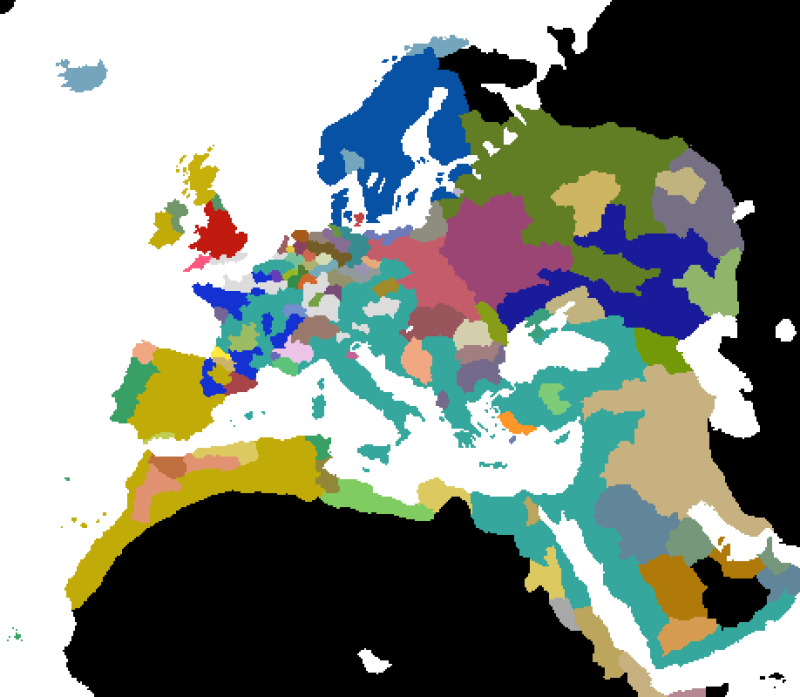

April, despite the fact Venice was more focused on acquiring bigger ships to fight the Iberian fleets, the Emperor expanded the Venetian arsenal so galleys could be amassed for pirate fighting duties. A whopping 10 galleys were commissioned throughout the Empire to protect the sea lanes. As well, a single one of the new Caravels was commissioned in Venice itself.
Venice made plans to warn the Austrians against further aggression, however, the fact they were under a regency council would inhibit any imperialist ambitions on their part. So it was logical to instead find a way to gain a casus belli on them.
May, it was discovered that Poland no longer ruled in personal union over Lithuania.
1502
February, the Timurid Empire was finally destroyed by the Shaybanids.
April, Sunni zealots rose up in Hadramut, but were struck down quickly and without mercy.
Mid-April, Orleanise nationalists rose up in Blois. General Pesaro was ordered to deal with them.
Late April, as the Battle of Blois raged, the treacherous Bulgarians pressed claims to Serbia, talking about "Pan-Slavism" and such nonsense.
May, Suakin was converted to Catholicism.
The rebels were soon crushed in the Battle of Blois, and they fled to Anjou. Pesaro was ordered to keep his guard up in the event they returned to Venetian territory.
July, a band of Lollard Heretics - that had occupied Paris and had come from it - invaded Venetian territory, but were repelled.

August, Salzburg's three provinces joined the Venetian Empire. Rebels rose up in Karnten and Slavonia in response when the Emperor offered no concessions for the peaceful annexation.
Immediately, 6,000 cavalry, 3,000 infantry, and 1,000 cannoners all converged on Karnten. The new cannons would finally be tested under the leadership of Pesaro.
September, the Styrian nationalists of Karnten were humbled, and as they fled to Lienz, Pesaro moved on Slavonia.
October, the 2,000 men in Slavonia were easily torn apart by Pesaro's cannons. The general was ordered to make sure the Styrian nationalists didn't become too troublesome.
December, the Hussite "War" finally de jure ended, as the destruction of Romanist Silesia by Poland allowed the Hussites in Prague to claim victory.
As well, the Lollards from Paris were once more repelled back to their fortress.
1503

At the annual New Years' celebration in Venice, the Emperor announced new reforms that would put more power in his hands for the benefit of the realm. This of course, had predictable results.
Hungry for war, the Emperor excommunicated the ruler of Trier, a vassal of Austria.
Claims were soon fabricated to the throne of Trier, and the war would be that much easier with Austria having no ruler and instead being run by a regency council.

The declaration of war in early March had the Austrians and Bavarians join in against Venice, while Novgorod ran away. No matter, as the Novgorodians had served their purpose as a defense against Poland-Lithuania, which no longer existed.
By late April, most battles had been minor skirmishes, while the Battle of Pressburg against the Austrians had minimal casualties on both sides. General Commachio was placed in charge of invading the Austrian homeland, Mose I took up command for taking the center of the Austrian Emperor, and Pesaro and Modegliano were to take over Austrian France and the Austrian Lowlands.

May, Niccolo Commachio's command at the Battle of Ostmarch made for a great victory over the lumbering Austrian soldiers.
Late May, 17 regiments were defeated in Othe, prompting them to retreat to Lollard-occupied Paris(which the Austrians were trying to liberate) and which already had 32 Austrian regiments inside. It was hoped that attrition would roast them alive.
June, the Battle of Linz destroyed the Austrian army protecting the homeland. It was deduced the units in Paris - who were being massacred by the difficulties of feeding all their men, not to mention Mose I's sneaky incitement of a troop desertion - were the main foe. Once Austria was occupied, troops would move on Bavaria.
July, Trier was fully occupied, but they could not be taken out of the war by merit of being a vassal. All infantry in the area were ordered to attack Austria's Rhenish provinces, while all cavalry were ordered west to support the efforts against the Austrian horde.
September, Commachio occupied Ostmarch. While Venice's allies attacked Vienna itself, it was reasoned that it was time to use the Bavarians as cannon fodder.
October, Flanders was taken from Austria while the Habsburg Horde converged on Barrois.
November, General Pesaro and Modegliani led 36 regiments against the Austrian hordes in Barrois.

The Battle ended later in November, being costly to both sides.
December had another victory over Austria in Valenciennes, with Venice suffering slightly more cavalry lost but Austria suffering far more on the infantry front.

December also had the Battle of the Sudetenland, where 5,000 Bavarians were easily cut down by the new Venetian cannons.
1504

February, a heretic arose in Trier, and the people quickly followed his ideas of a reformed Christian faith.
March, Zeeland fell, placing the whole of the Austrian Lowlands under Venetian control.

Late March, the Battle of Champagne destroyed the last of the Austrian Army, with their sole 2,000 troops being across the English Channel in Dover.
April, the province of Croatia was acknowledged as an integral part of Venice.
May, Poland annexed Brandenburg.
June, Schwaben was retaken from Bavaria.
The "Holy" and "Roman" "Emperor" begged Mose I for mercy. Mose I replied by saying that just like there could only be one Church, there could only be one Empire. Mose I said that the Bavarians had failed in their Imperial duties, having failed to preserve religious and political stability. Bavaria was to be reunified, but as a province of Venice. The Bavarian Duke was forced to abdicate and was sent into exile; he would later be killed by "Protestant zealots."
Days after the fall of Munich, the ruler of Oldenburg was elected to lead the Holy Roman Empire. Being a city-state, Venice's imperial ambitions would still be unmatched.

July, Valenciennes fell, and most of the Austrian Empire was firmly under Venetian occupation. Only the English provinces and parts of Austrian France had escaped occupation. The Austrian Archduke immediately signed the usual humiliating peace treaty.
In a single war, Mose I had linked up Lorraine with Venetian France, while he also conquered the Austrian Lowlands, in the process cutting off Austrian England from the continent. Furthermore, the taking of gold-rich Tirol allowed easier access to the Bavarian territories. What was most alarming was the toppling and resulting annexation of the Bavarian Duchy which, as a consequence, left Austria proper surrounded - except for the "Bohemian airhole" - by Venetian lands.
Of course, Venice's reputation was tarnished that it would forcefully annex a Catholic, especially the Emperor. But Mose I held his head high, proud of his achievement in further centralising the Holy Roman Empire.
Mose believed that onne day, he would topple Oldenburg. One day, the Electors would see the light and acknowledge him as their supreme overlord, second only to God.
1504 had ended. The Reformation was in full swing, as were Venice's ambitions in Germany and all of Europe.


 P). I'm definitely going to use a lot of that to improve my game. (I'm sure it'll help a lot more when I start a new game after getting HttT.)
P). I'm definitely going to use a lot of that to improve my game. (I'm sure it'll help a lot more when I start a new game after getting HttT.) France should be easy as well. Guyenne has eaten part of their south and there's still no troops in sight. I think France is dead for good this time. (Then again, the AI just LOVES to hoard money/share it with the other AI, hence the mercenary hordes)
France should be easy as well. Guyenne has eaten part of their south and there's still no troops in sight. I think France is dead for good this time. (Then again, the AI just LOVES to hoard money/share it with the other AI, hence the mercenary hordes)  That's one reason I attacked Austria's vassals rather than Austria itself, to avoid triggering a war with England. I'm not sure of England's specifics, though I do know they've been a third-world hellhole the entire game(at least after Burgundy stole their southern coastline), as they're constantly getting "Local Pretender Rises" and such.
That's one reason I attacked Austria's vassals rather than Austria itself, to avoid triggering a war with England. I'm not sure of England's specifics, though I do know they've been a third-world hellhole the entire game(at least after Burgundy stole their southern coastline), as they're constantly getting "Local Pretender Rises" and such.  They're currently at -2 stability. I'm honestly thinking the "Lucky" tag is pretty much worthless, with the exceptions of Castile and Sweden.
They're currently at -2 stability. I'm honestly thinking the "Lucky" tag is pretty much worthless, with the exceptions of Castile and Sweden. I will, of course, be more than happy to take any Catholic provinces they have gained in formerly-Sunni provinces. Gotta protect the Catholics of the world from the Protestant heretics and the Sunni heathens, aye?
I will, of course, be more than happy to take any Catholic provinces they have gained in formerly-Sunni provinces. Gotta protect the Catholics of the world from the Protestant heretics and the Sunni heathens, aye? 
 ) for Catholicism. And I have the strangest feeling Germany will see more blue than yellow on the religious map in the near future...
) for Catholicism. And I have the strangest feeling Germany will see more blue than yellow on the religious map in the near future...
